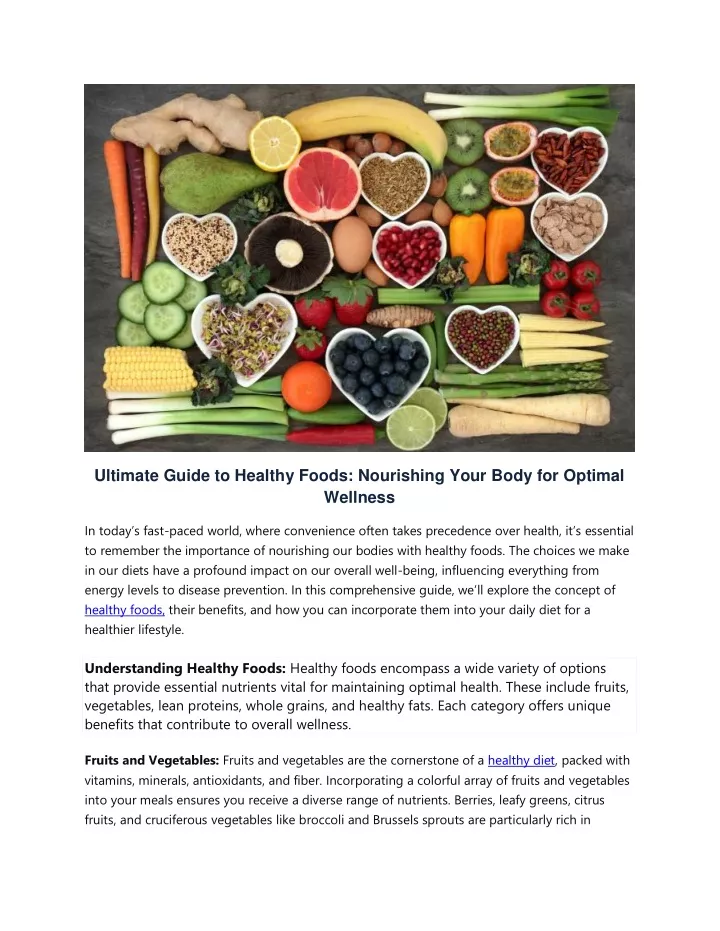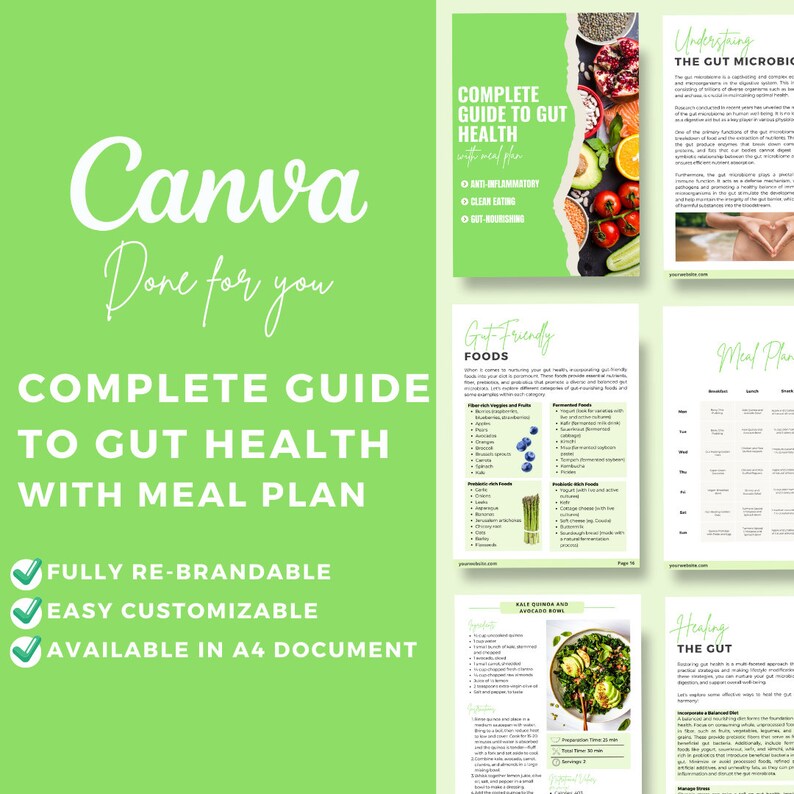“Healthy Meal Plan: A Comprehensive Guide to Nourishing Your Body
With excitement, let’s uncover the fascinating topic of Healthy Meal Plan: A Comprehensive Guide to Nourishing Your Body. Let’s weave together engaging insights and offer a fresh perspective to our readers.
About Video Healthy Meal Plan: A Comprehensive Guide to Nourishing Your Body
Healthy Meal Plan: A Comprehensive Guide to Nourishing Your Body
In today’s fast-paced world, maintaining a healthy lifestyle can feel like a daunting task. With countless food options and conflicting dietary advice, it’s easy to get lost in the noise and struggle to make the right choices. However, prioritizing your health doesn’t have to be complicated. By implementing a well-structured healthy meal plan, you can nourish your body, boost your energy levels, and achieve your wellness goals.
In this comprehensive guide, we’ll delve into the intricacies of creating a healthy meal plan that suits your individual needs and preferences. We’ll explore the benefits of meal planning, essential nutrients to include, sample meal plans, practical tips for success, and address common challenges you might encounter.
Why Embrace a Healthy Meal Plan?
A healthy meal plan is more than just a diet; it’s a roadmap to a healthier, happier you. Here are some compelling reasons to embrace this lifestyle change:
-
Improved Nutrition: A well-crafted meal plan ensures you’re consuming a balanced array of essential nutrients, including vitamins, minerals, protein, carbohydrates, and healthy fats. This can help prevent nutrient deficiencies and optimize your overall health.
-
Weight Management: By controlling portion sizes and making mindful food choices, a meal plan can aid in weight loss, weight maintenance, or healthy weight gain. It eliminates impulsive eating and promotes a calorie-conscious approach to food.

-
Increased Energy Levels: When you fuel your body with nutritious foods, you’ll experience sustained energy throughout the day. Say goodbye to energy crashes and hello to enhanced productivity and vitality.

Better Digestion: A meal plan that incorporates fiber-rich foods, such as fruits, vegetables, and whole grains, can promote healthy digestion and prevent constipation.
-
Reduced Risk of Chronic Diseases: A healthy meal plan can significantly reduce your risk of developing chronic diseases like heart disease, type 2 diabetes, and certain types of cancer.
-
Time and Money Savings: Planning your meals in advance can save you time and money. You’ll avoid last-minute takeout orders and reduce food waste by buying only what you need.
-
Mindful Eating: A meal plan encourages you to be more mindful of your food choices. You’ll pay attention to portion sizes, ingredients, and the overall nutritional value of your meals.

Essential Nutrients for a Healthy Meal Plan
A healthy meal plan should include a variety of nutrient-rich foods from all food groups. Here are the essential nutrients you need to thrive:
-
Protein: Protein is crucial for building and repairing tissues, supporting immune function, and producing enzymes and hormones. Good sources of protein include lean meats, poultry, fish, eggs, beans, lentils, tofu, and nuts.
-
Carbohydrates: Carbohydrates are your body’s primary source of energy. Choose complex carbohydrates over simple sugars. Excellent sources of complex carbohydrates include whole grains, fruits, vegetables, and legumes.
-
Healthy Fats: Healthy fats are essential for brain function, hormone production, and nutrient absorption. Opt for unsaturated fats found in avocados, nuts, seeds, olive oil, and fatty fish.
-
Vitamins and Minerals: Vitamins and minerals are vital for countless bodily functions. Consume a variety of colorful fruits and vegetables to ensure you’re getting a wide range of these essential nutrients.
-
Fiber: Fiber promotes healthy digestion, regulates blood sugar levels, and helps you feel full and satisfied. Include plenty of fruits, vegetables, whole grains, and legumes in your meal plan.
-
Water: Staying hydrated is essential for overall health. Drink plenty of water throughout the day to support digestion, nutrient absorption, and waste removal.
Crafting Your Personalized Meal Plan
Creating a meal plan that works for you requires careful consideration of your individual needs and preferences. Here’s a step-by-step guide:
-
Determine Your Calorie Needs: Calculate your daily calorie needs based on your age, gender, activity level, and weight goals. Online calculators or a registered dietitian can help you determine the right calorie range for you.
-
Set Your Macronutrient Ratios: Decide on the macronutrient ratios (protein, carbohydrates, and fats) that align with your goals. A common starting point is 40% carbohydrates, 30% protein, and 30% fats, but you can adjust this based on your needs.
-
Choose Your Foods: Select nutrient-rich foods from each food group that you enjoy eating. This will make your meal plan more sustainable and enjoyable.
-
Plan Your Meals and Snacks: Create a detailed meal plan that includes breakfast, lunch, dinner, and snacks. Be sure to incorporate a variety of foods to keep things interesting.
-
Write a Grocery List: Based on your meal plan, create a comprehensive grocery list to ensure you have all the ingredients you need.
-
Prepare Your Meals: Set aside time each week to prepare your meals in advance. This will make it easier to stick to your meal plan and avoid unhealthy impulse choices.
Sample Healthy Meal Plans
Here are a few sample meal plans to get you started. Remember to adjust portion sizes and food choices based on your individual needs and preferences.
Meal Plan 1: Weight Loss (1500 Calories)
- Breakfast (300 calories): Oatmeal with berries and nuts
- Snack (150 calories): Greek yogurt with a drizzle of honey
- Lunch (400 calories): Grilled chicken salad with mixed greens, vegetables, and a light vinaigrette
- Snack (150 calories): Apple slices with almond butter
- Dinner (500 calories): Baked salmon with roasted vegetables
Meal Plan 2: Muscle Gain (2500 Calories)
- Breakfast (500 calories): Protein smoothie with fruit, spinach, and protein powder
- Snack (250 calories): Hard-boiled eggs and a handful of almonds
- Lunch (600 calories): Chicken breast with brown rice and steamed broccoli
- Snack (250 calories): Cottage cheese with pineapple
- Dinner (900 calories): Steak with sweet potato and asparagus
Meal Plan 3: Vegetarian (2000 Calories)
- Breakfast (400 calories): Tofu scramble with vegetables and whole-wheat toast
- Snack (200 calories): Edamame
- Lunch (500 calories): Lentil soup with a side salad
- Snack (200 calories): Hummus with vegetable sticks
- Dinner (700 calories): Vegetarian chili with brown rice
Tips for Meal Planning Success
Here are some practical tips to help you stay on track with your healthy meal plan:
-
Start Small: Don’t try to overhaul your entire diet overnight. Start by making small, gradual changes to your eating habits.
-
Be Realistic: Choose a meal plan that fits your lifestyle and preferences. If you don’t enjoy cooking, opt for simple recipes and pre-cut vegetables.
-
Plan Ahead: Spend some time each week planning your meals and creating a grocery list. This will save you time and reduce the temptation to make unhealthy choices.
-
Prepare Your Meals: Batch cooking can be a lifesaver. Prepare a large batch of healthy meals on the weekend and portion them out for the week.
-
Keep Healthy Snacks on Hand: When hunger strikes, reach for healthy snacks like fruits, vegetables, nuts, or yogurt.
-
Stay Hydrated: Drink plenty of water throughout the day to stay hydrated and curb cravings.
-
Don’t Be Afraid to Indulge: Allow yourself occasional treats in moderation. Depriving yourself completely can lead to cravings and binge eating.
-
Track Your Progress: Keep a food journal or use a meal tracking app to monitor your progress and identify areas where you can improve.
-
Be Patient: It takes time to develop healthy eating habits. Don’t get discouraged if you slip up occasionally. Just get back on track with your next meal.
-
Seek Professional Guidance: If you’re struggling to create a healthy meal plan on your own, consult a registered dietitian or nutritionist. They can provide personalized guidance and support.
Addressing Common Challenges
Even with the best intentions, you may encounter challenges along the way. Here are some common obstacles and how to overcome them:
-
Lack of Time: If you’re short on time, focus on quick and easy recipes. Utilize pre-cut vegetables, canned beans, and other convenience items.
-
Limited Budget: Healthy eating doesn’t have to be expensive. Shop for seasonal produce, buy in bulk, and cook at home.
-
Social Events: When attending parties or social gatherings, plan ahead. Eat a healthy snack beforehand so you’re not ravenous, and choose healthier options when available.
-
Cravings: When cravings strike, try to identify the underlying cause. Are you bored, stressed, or simply hungry? Find healthy ways to cope with these triggers.
-
Travel: When traveling, pack healthy snacks and plan your meals in advance. Look for restaurants that offer healthy options.
Conclusion
A healthy meal plan is a powerful tool for nourishing your body, achieving your wellness goals, and living a healthier, happier life. By understanding the principles of nutrition, creating a personalized meal plan, and implementing practical tips, you can transform your eating habits and reap the numerous benefits of a healthy lifestyle. Remember, it’s a journey, not a destination. Be patient, persistent, and enjoy the process of creating a healthier you.

